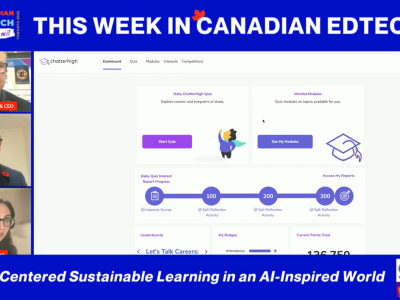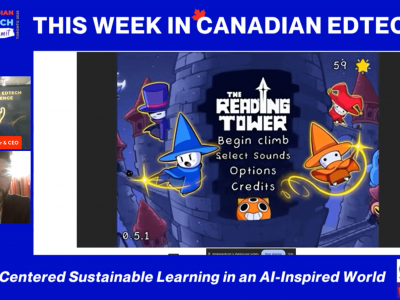Any time you can get a student to login to an adaptive learning environment, secure their attention for a good length of time while learning mathematics conceptually, you have to take notice. Welcome to Dreambox. Dreambox is an online, intelligent adaptive learning environment for K-8 students in mathematics. It uses an easy to navigate interface with a pedagogically tried and true learning environment in mathematics that motivates students to work through math concepts at the student’s developmental level in math. This learning environment stimulates thinking and causes students to think through their understanding of mathematics, rather than simply answering knowledge level questions. I’ll give a brief overview of the major components of this program and then provide a concluding synopsis.
Dreambox is an adaptive learning context. It’s adaptive because as a student works through the various math activities the program determines through intelligent algorithms working in the background whether the math is being understood, or if the student requires intervention. The program then adjusts the work accordingly and provides opportunities for the student to understand those concepts that he or she may not understand. It’s an electronic ‘scaffolding’ of sorts; you move through the math only as you understand the key pieces of the strand. The software does the ‘heavy lifting’ and the teacher can then use their dashboard (Figure 1) to look a little more deeply into each individual’s progress, or the progress of the class on a whole.
Figure 1
The teacher has access through the teacher dashboard to get a classroom summary where they can check proficiency progress, time on task and weekly or detailed reports per student. They can also check a students progress by standard (Ontario’s standards are currently supported); student groups by proficiency; progress monitoring where a teacher can view a student’s response to intervention progress using a custom date range; classroom usage where the teacher can monitor the number of hours spent on the program, and lessons an units completed by the classroom. The dashboard is an excellent way to check a student’s understanding. If a student is having difficulty then a more individualized program can be set up for the student in the classroom with appropriate help and support. This dashboard is quite simply a powerful intervention tool! The analytics built into Dreambox are relevant, actionable and reportable. If data is needed to provide support for a student’s learning, or to report back to parents about his or her needs then you won’t find a more powerful intervention tool then the teacher dashboard.
The administrator also has access to a dashboard. (Figure 2) This dashboard provides access to a School Snapshot, School Summary, Proficiency by Standard and Usage Over Time graphs. The graphs for each of the above areas are excellent in that they provide an administrator with the most relevant whole school data that they would need in a ‘snapshot’ view. If the administrator
wants to ‘drill down’ further they can do that as well.

Figure 2
Having this kind of data ‘at hand’ can inform school pathways in mathematics and provide the relevant data to make informed decisions about ‘next steps’ for staff professional development. And to be clear, this data is sound! This is a clear view at school, class and student performance in the understanding of the Big Ideas, or Key Understandings in mathematics. It is therefore an extremely informative tool for whole school planning and professional development in mathematics.
To be clear, Dreambox is not meant to replace a classroom teacher’s math program. This program provides extra support for what is already being done in the classroom. It is however interesting to note that this program will also challenge the teacher to teach mathematics more conceptually. If students are having difficulty appreciating the concepts in the program it may be an indication that they’ve been inundated with a math program that is focused more on procedural mathematics rather than having students truly understand that the procedures are necessary in order to understand the concepts. In this regard, this program is cogent! If this program is used with a classroom program that is sound pedagogically in mathematics then Dreambox will further solidify the student’s understanding of mathematics. In short, Dreambox is a tool for supporting, clarifying and extending a student’s skill development in mathematics.
Students are able to login to Dreambox quite easily. In an elementary school context you want to make sure there’s an easy login interface that opens to a learning environment that is easy to navigate. Dreambox does this well. Once the student logs into Dreambox they are provided with tutorials for each math area that they will work through (Figure 2).
Figure 3
The tutorials are engaging and the students will easily begin to understand how to proceed through each strand or unit of math. The student can also easily navigate back to their lessons, log out from Dreambox or seek further help if they’re having difficulty understanding a particular portion of the environment. These tools are placed at the top of page.
Once a student chooses an area of math the program opens a learning environment that provides the student with clear and audible instructions. The icons above and below the student working area provide easy instructions on how to proceed through each problem and solve it, or if they need clarification or help with a particular section of the math environment the student can get this help in context. As students progress through the problems they can accumulate points that allow them to purchase and personalize their learning space.
The learning context for each lesson in each unit is fun! (Figure 4) I’ve observed students working through the various math ‘lessons’ with confidence – regardless of ability! I’ve also noticed that this ‘game-based’ learning context allows the student to learn without the fear of being embarrassed or left feeling defeated. If fear contributes to math anxiety, which surely it does, then this program actually encourages students to take risks. For this reason – and many other reasons! – I love this program. They can then in their own learning context – learning sandbox – explore, develop, and risk learning in mathematics. It is necessary however that an appropriate amount of time is provided for students to access this program.
I would recommend at least an hour a week, but if you want to ensure that it has a greater impact I would say at least 2 hours a week. This is not to say that students can’t play it at home. Dreambox also provides a convenient letter that can be generated and sent home to parents so that they can help their son or daughter access the program from home. In fact, many of the students using it at my school are logging in at home, and most via the iPad application. Yes, Dreambox has an iPad app! In my observation the application works extremely well with very few glitches, if any.
The other part of this program that I truly appreciate, and sets it apart from other programs in this field, is that it also allows parents to follow the progress of their child. Parents can also log in to Dreambox and observe their son or daughter’s progress. If you can get parents on board, and I would recommend having a parent information night at your school if you introduce Dreambox at your school, then this program will become ever more powerful. This of course means that during your introduction of Dreambox to the parent community you make sure that you stress the importance of supporting children in positive ways, encouraging parents to create a learning environment at home where Dreambox is seen as fun and positive.
This is a very cursory view of Dreambox. I could provide a more detailed view of what the program can do but, of course, to truly appreciate the magic and power of this adaptive learning environment in mathematics you need to try it out yourself! I’ve tried a great many online math learning environments and to say that this is exceptional is an understatement. Dreambox is worth the time to investigate more thoroughly for your district, or school. It’s also worth the investment. If used properly and purposefully I can almost certainly guarantee you that your community of learners at your school will develop a deeper and richer understanding of mathematics. I wouldn’t risk saying this if I didn’t believe it. And I believe it with Dreambox!












